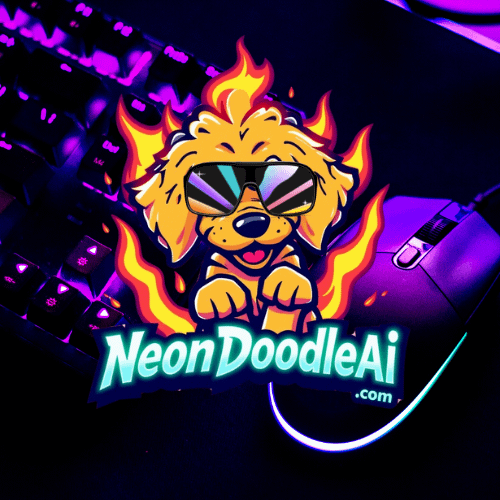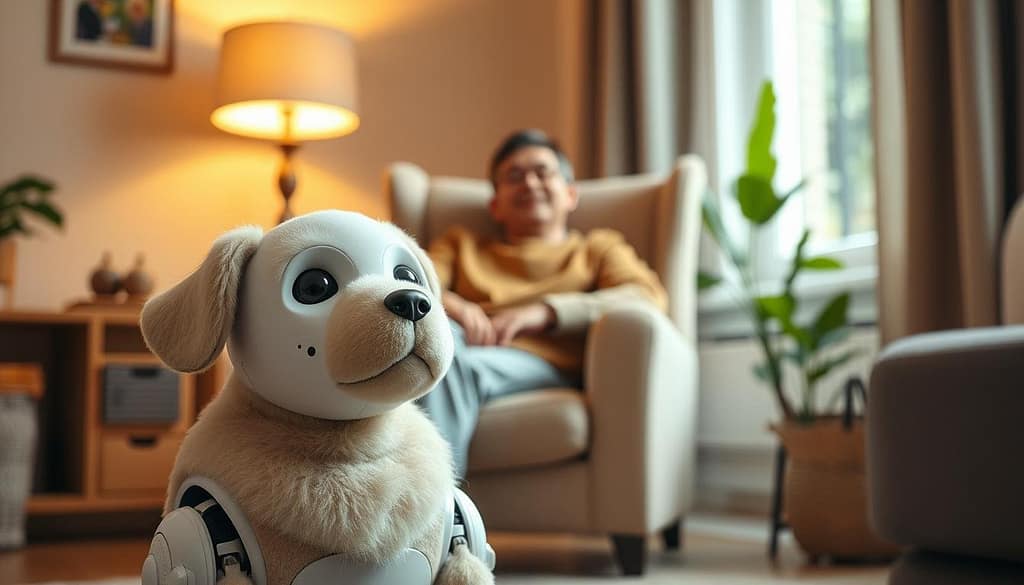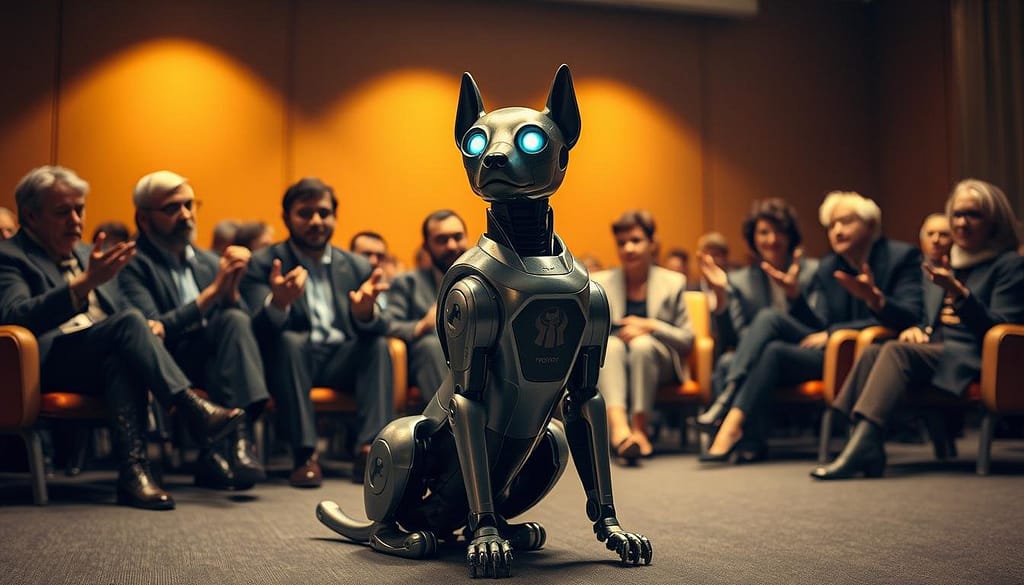Haruka Uto, a Tokyo resident, found comfort in an unexpected friend. Instead of adopting a traditional pet, she welcomed Moflin and LOVOT into her home. These lifelike robots respond to touch, mimic emotions, and provide constant companionship.
Many people now seek alternatives to animal ownership. Busy schedules or limited living spaces make caring for pets difficult. Robotic companions offer affection without the daily responsibilities of feeding or walks.
The global market for social robots is booming. Experts predict it will grow from $7 billion to $57 billion by 2032. Countries like Japan lead this trend, blending technology with cultural acceptance of synthetic bonds.
These innovations help address modern challenges. Seniors, isolated individuals, and those with allergies benefit from interactive machines. They provide emotional support while adapting to human needs.
Why AI Companions: The Rise of Robotic Pets Dogs Is Booming
Dr. Wenxin Li’s studies reveal how machines ease isolation in surprising ways. Her research shows tactile robots reduce loneliness by 40% in seniors and office workers. These devices respond to touch, creating bonds without complex care needs.
LOVOTs, like Uto’s, adapt to human emotions. They display jealousy if ignored or react to voice tones. Such behaviors mimic real animal interactions, making them relatable.
Artificial intelligence helps these devices learn preferences over time. For seniors lacking tech skills, simple voice commands activate companionship. No feeding or walks are required—just genuine emotional responses.
Robots also bridge social gaps. Uto’s coworkers often engage with her LOVOT, sparking conversations. In shared spaces, they become icebreakers, fostering human connections.
Voice recognition and emotional algorithms enhance responsiveness. A study found that 72% of users felt understood by their robotic friends. This ability to “listen” without judgment appeals to isolated individuals.
Therapeutic Applications of Robotic Dogs
In dementia care facilities, robotic pets provide comfort without the hassles of real animals. They don’t need walks, feeding, or grooming, yet offer emotional responses that soothe patients. LOVOTs, used in Japan, reduce agitation by 30% in clinical trials.
Moflin robots stand out with nine emotions, from curiosity to contentment. Their artificial intelligence adapts to owners’ behaviors, creating personalized bonds. For seniors, this means companionship without complex care routines.
“People attribute moral worth to robots that mimic living creatures, blurring lines between tool and friend,” says Dr. Jaime Banks of Syracuse University.
Robotic pets excel in autism therapy too. Predictable interactions help children develop social skills. Unlike real animals, they won’t react unpredictably, making them ideal for sensory-sensitive individuals.
| Expense | Real Pets | Robotic Pets |
|---|---|---|
| Vet Bills | $500+/year | $0 |
| Food | $300+/year | $0 |
| Grooming | $200+/year | $0 |
| Initial Cost | $50–$2,000 | $100–$3,000 |
Tactile feedback is another advantage. Stroking a robotic pet lowers stress hormones, studies show. For isolated individuals, this simple interaction can improve mental health significantly.
Market Growth and Cultural Adoption
LOVOTs retail for over $3,000, yet buyers report unmatched emotional benefits. The global market for interactive machines is projected to reach $57 billion by 2032, according to IMARC Group. Japan dominates this space, with brands like Groove X and Casio seeing record sales.
Cultural acceptance plays a key role. Japan’s long history with robots as helpers makes synthetic bonds more natural. Dr. Belinda Dunstan (UNSW) notes newer models analyze voice tones with 89% accuracy, deepening human connections.
Price points reveal clear trends:
- Moflin robots: $500–$1,200 (Casio)
- LOVOTs: $3,000+ (Groove X)
- Therapy models: $2,000–$4,500
| Brand | Price Range | Key Feature |
|---|---|---|
| Casio Moflin | $500–$1,200 | 9 emotional states |
| Groove X LOVOT | $3,000+ | Voice-tone recognition |
| PARO (Therapy) | $2,000–$4,500 | Tactile sensors |
Millennials are primary buyers, valuing low-maintenance companionship. Critics debate if machines can truly replicate emotions, but owners argue the health benefits far outweigh philosophical concerns.
“Robots don’t replace humans—they fill gaps in our over-scheduled lives,” notes Dr. Dunstan.
Ethical Debates and Limitations
Can machines truly replace the emotional bonds formed with living creatures? Dr. Belinda Dunstan advocates for legal frameworks to govern human-robot interactions. Her research suggests mistreatment of synthetic pets might normalize harmful behaviors toward both machines and animals.
Casio presents a contrasting view, promoting “mutual assistance” between people and technology. Their Moflin robots are designed to complement rather than replace organic relationships. However, company engineers warn about advanced systems potentially surpassing human control within five years.
Dr. Jaime Banks documented unexpected grief when companion apps shut down. Users reported mourning digital friends as they would living pets. This raises questions about emotional authenticity in synthetic relationships.
“We must distinguish between simulated care and genuine emotional support,” argues Dr. Dunstan. “Technology should enhance human connections, not substitute them.”
Technical limitations remain challenging. Current models struggle with:
- Battery life lasting less than 24 hours
- Computing power limitations for complex emotional responses
- High production costs limiting market accessibility
Critics like Roi Kadosh argue these machines might weaken human-animal bonds. Yet supporters highlight their role in providing companionship where traditional pets aren’t feasible. The debate continues as technology evolves.
The Future of Pet Ownership: Organic or Synthetic?
By 2070, synthetic pets may outnumber living ones in urban homes. Experts predict 90% adoption as neuroprosthetic interfaces emerge, letting owners bond with machines through thought alone by 2060.
Material science leaps forward. Synthetic fur now mimics real textures, enhancing tactile interactions. Dr. Li believes emotional parity is possible, while critic Roi Kadosh warns of diluted human-animal bonds.
Dr. Banks’ NSF-funded work shows machines reduce loneliness by mirroring mind perception. Younger generations drive this shift, valuing tech’s convenience over live animals.
The debate continues, but one thing is clear: pet ownership is evolving. Whether organic or robotic, companionship remains the ultimate goal.



